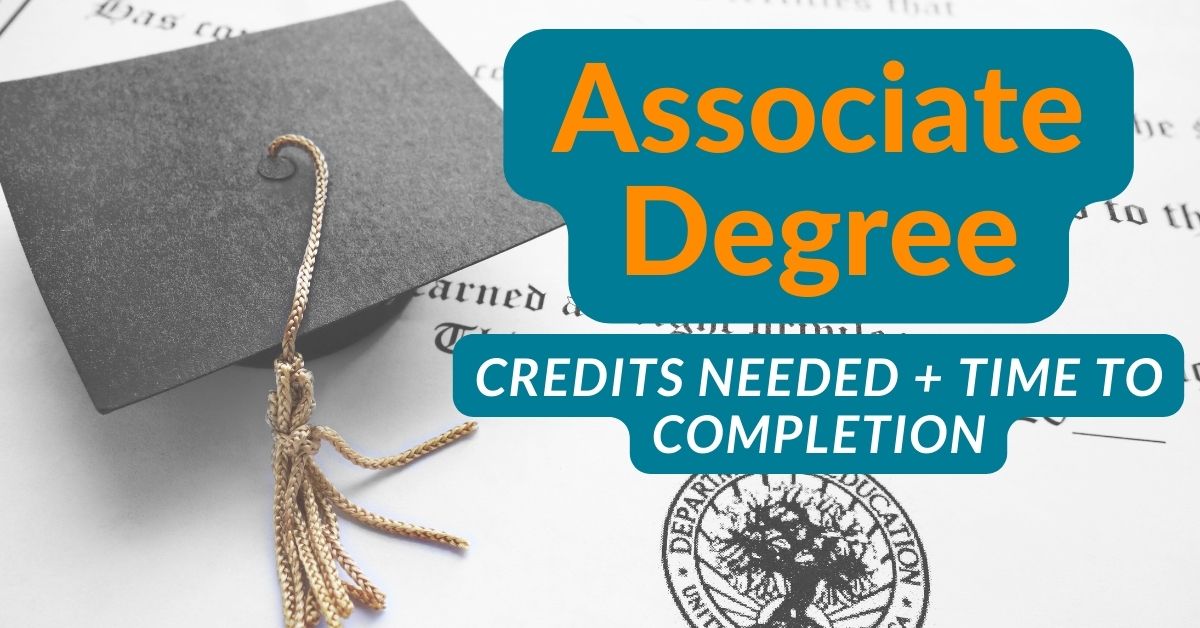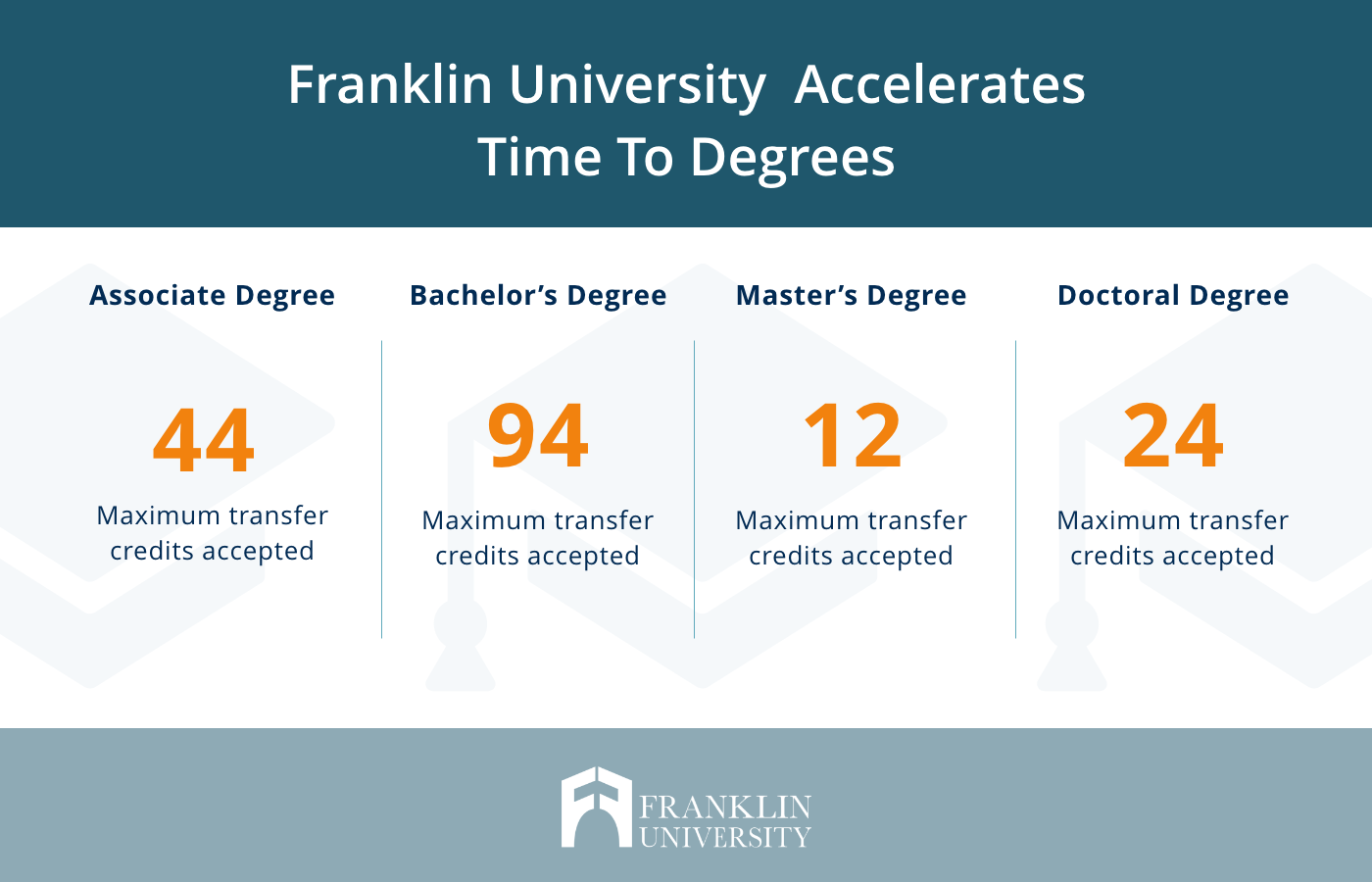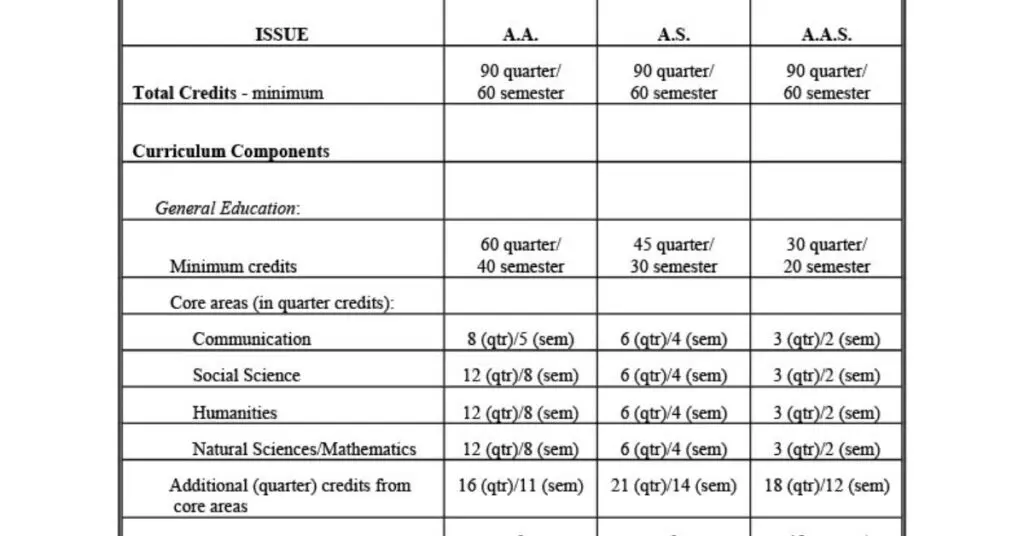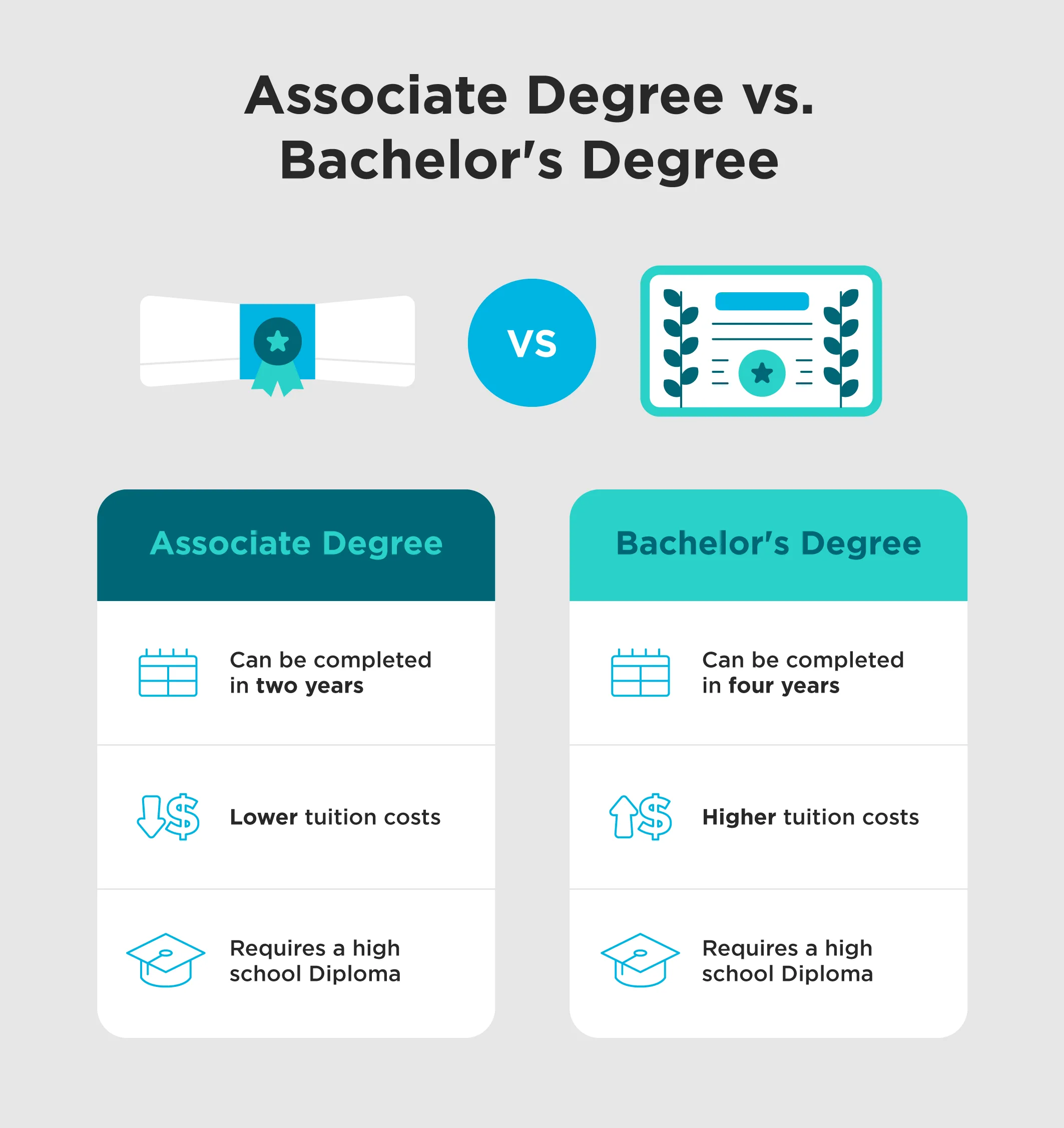How Many Credits To Get Associate Degree
How Many Credits To Get Associate Degree: The Ultimate Guide to Planning Your Education
You're ready to take the next step in your educational journey, and the Associate Degree is a fantastic way to start. It offers a quicker path to professional skills or a solid foundation for transferring to a four-year university. But before you dive into course catalogs, a crucial question usually pops up: How Many Credits To Get Associate Degree?
It's a straightforward question, yet the answer has a few nuances depending on where you study and what degree you choose. Don't worry, we're here to break down the credit requirements, explain why they vary, and help you plan your degree path efficiently. Let's get started!
The Magic Number: Standard Credit Requirements
If you are looking for the shortest possible answer regarding How Many Credits To Get Associate Degree, here it is: most institutions require 60 credits. This standard number is based on the traditional structure of U.S. higher education.
Generally, an Associate Degree is designed to be completed in two full years of full-time study. Since a full-time student typically takes 15 credits per semester, over four semesters (two years), you land exactly at 60 credits. However, it is very common for programs to require anywhere between 60 to 64 credits to account for specific major requirements or lab courses.
It is also important to note the difference between semester hours and quarter hours. If your college uses the quarter system (where the academic year is split into three main terms instead of two semesters), that 60-credit standard converts to approximately 90 quarter units. Always confirm with your specific college catalog to understand their unit system.
Why 60 Credits? Breaking Down the Requirements
The 60 credit hours aren't just a random collection of courses. They are carefully organized to ensure you receive a comprehensive education. These credits are typically split into two main buckets: General Education requirements and Major-Specific requirements.
General education courses are the core foundation. These ensure that regardless of your major, you develop critical thinking, communication, and foundational knowledge across various disciplines. These courses often take up about one-third to one-half of your total credit count.
The remaining credits are dedicated to your major, giving you the specialized skills needed for your chosen career or upper-division university courses. Here is a typical breakdown of how your credits might look:
- General Education (30-35 Credits): Includes mandatory courses in English Composition, Mathematics, Humanities, Social Sciences, and basic Lab Sciences.
- Major Concentration (20-25 Credits): Focused courses directly related to your degree area (e.g., Introduction to Programming, Business Law, or Nursing Fundamentals).
- Electives (5-10 Credits): Courses you choose based on interest, or sometimes required to meet the specific credit threshold (60 or 64).
Factors That Influence the Credit Count
While 60 credits is the generally accepted answer to How Many Credits To Get Associate Degree, certain factors can push that number slightly higher or, sometimes, allow you to complete the degree faster by utilizing existing credits.
Understanding these variables is key to planning your schedule and budgeting your time and money effectively. Always look closely at the fine print of your chosen program.
Type of Associate Degree Matters
The type of associate degree you pursue has a significant impact on the credit structure. Some degrees are designed specifically for transferring, while others are geared toward immediate job placement. Therefore, the required credit minimums can sometimes differ slightly.
Here are the three main types of Associate Degrees:
- Associate of Arts (A.A.): Generally focused on liberal arts, humanities, and social sciences. These are usually the most flexible for transfer. They typically stick closely to the 60-credit benchmark.
- Associate of Science (A.S.): Focused on STEM fields (Science, Technology, Engineering, and Mathematics). Because these fields often require intensive lab work and prerequisite sequences, A.S. degrees frequently land in the 62-to-64 credit range.
- Associate of Applied Science (A.A.S.): Designed primarily for career entry, focusing heavily on technical skills (e.g., welding, medical coding, or culinary arts). While still often 60 credits, these programs have the least amount of transferable general education courses, focusing instead on specialized occupational credits.
Transfer vs. Career Focus
If your goal is to transfer to a four-year university, you must ensure that every credit counts. Many states have strict articulation agreements (transfer policies) between community colleges and public universities. These agreements mandate that certain A.A. or A.S. degrees must be exactly 60 or 61 credits to guarantee junior status upon transfer.
However, if you are earning an A.A.S. degree to jump straight into the workforce, you might encounter programs that are closer to 65 or 70 credits, especially if they include extensive clinical or internship requirements that contribute to the credit total. It just goes to show how specialized training can slightly alter the answer to How Many Credits To Get Associate Degree.
Accelerated Programs and Prior Learning Assessment (PLA)
While you still need to accumulate the full 60+ credits, you might not have to take 60 classes from scratch. This is where options like accelerated programs or Prior Learning Assessment (PLA) become incredibly valuable.
PLA is a process where a college evaluates your existing knowledge and skills gained through work experience, military service, or professional certifications and grants you college credit for them. This can dramatically reduce the number of courses you need to physically sit through, speeding up your completion time and saving money.
Planning Your Path: Maximizing Your Credits
The key to achieving your Associate Degree efficiently is meticulous planning. Knowing that you need 60 to 64 credits is just the start. You need a semester-by-semester map to ensure you stay on track and don't waste time or money on unnecessary classes.
First and foremost, meet with an academic advisor immediately. They can help you map out the specific core requirements for your degree and verify that any credits you plan to transfer will be accepted.
Additionally, if you are serious about completing your degree in two years, plan on taking 15 credits every fall and spring semester. Many students try to lighten their load by taking 12 credits, which seems like a full course load, but this inevitably stretches the degree completion time to two and a half or three years.
Transferring Credits from High School or Other Institutions
Did you take college-level courses in high school? If so, you may already have a head start on those 60 credits! Programs like Advanced Placement (AP), International Baccalaureate (IB), and Dual Enrollment (where you take community college courses while still in high school) are excellent ways to chip away at your requirement before officially enrolling.
However, credit acceptance policies vary wildly. While some schools accept a score of 3 on an AP exam for credit, others require a 4 or 5. Always send your scores and transcripts to the admissions office early in the process to get a clear picture of how many credits you are bringing in, reducing your overall required load.
Ultimately, whether you need 60 or 64 credits, leveraging transfer options means less time and fewer classes required for you to hit that graduation mark.
Conclusion: Determining Your Required Credits
So, How Many Credits To Get Associate Degree? The definitive number is almost always between 60 and 64 semester credit hours, or about 90 quarter units. This range reflects the standard two-year curriculum built on a balance of general education and major-specific courses.
Remember that the specific number hinges on the type of degree (A.A., A.S., or A.A.S.) and the specific institution's curriculum requirements. Your best approach is always to consult your college's official degree checklist or speak directly with an academic advisor. By understanding the credit structure, you can strategically plan your course load and achieve your Associate Degree goals in the most efficient time possible.
Frequently Asked Questions (FAQ) About Associate Degree Credits
- What is the difference between a credit hour and a class?
- A credit hour typically represents one hour of classroom instruction per week over a semester. Most classes are 3 credit hours, meaning they meet for three hours per week. Therefore, to earn an Associate Degree requiring 60 credits, you usually need to pass around 20 courses.
- Can I finish an Associate Degree faster than two years?
- Absolutely! If you take courses during summer or winter terms, maintain a heavier course load (18 credits per semester), or successfully transfer in credits via AP exams or Prior Learning Assessment, you can often finish the 60 credits required to get an Associate Degree in 18 months or even less.
- Do online Associate Degrees require the same number of credits?
- Yes. Whether your degree is earned online, in person, or a hybrid of both, the required total number of credits (usually 60–64) remains consistent because the degree requirements are mandated by accreditation standards, not by delivery method.
- What happens if I have more than 60 credits?
- Having extra credits is common, especially if you changed your major or transferred between institutions. If you plan to transfer to a four-year university, they will usually accept all relevant general education and major credits, even if you accumulated more than the standard 60 credits for the Associate Degree.
- Are 60 credits enough to transfer as a junior?
- In many states, yes, a 60-credit Associate of Arts (A.A.) or Associate of Science (A.S.) degree guarantees you junior standing (third year) at a public four-year university, provided you meet the minimum GPA requirement and choose courses compatible with your desired major.
How Many Credits To Get Associate Degree
How Many Credits To Get Associate Degree Wallpapers
Collection of how many credits to get associate degree wallpapers for your desktop and mobile devices.

Crisp How Many Credits To Get Associate Degree Wallpaper Nature
A captivating how many credits to get associate degree scene that brings tranquility and beauty to any device.

High-Quality How Many Credits To Get Associate Degree Moment in 4K
Discover an amazing how many credits to get associate degree background image, ideal for personalizing your devices with vibrant colors and intricate designs.
.png)
Crisp How Many Credits To Get Associate Degree Capture Concept
A captivating how many credits to get associate degree scene that brings tranquility and beauty to any device.

Crisp How Many Credits To Get Associate Degree Image Illustration
This gorgeous how many credits to get associate degree photo offers a breathtaking view, making it a perfect choice for your next wallpaper.

Stunning How Many Credits To Get Associate Degree Landscape Art
Find inspiration with this unique how many credits to get associate degree illustration, crafted to provide a fresh look for your background.

Lush How Many Credits To Get Associate Degree Capture Photography
A captivating how many credits to get associate degree scene that brings tranquility and beauty to any device.

Stunning How Many Credits To Get Associate Degree Landscape Concept
Immerse yourself in the stunning details of this beautiful how many credits to get associate degree wallpaper, designed for a captivating visual experience.

Beautiful How Many Credits To Get Associate Degree Photo Collection
Experience the crisp clarity of this stunning how many credits to get associate degree image, available in high resolution for all your screens.

Serene How Many Credits To Get Associate Degree Picture Nature
Experience the crisp clarity of this stunning how many credits to get associate degree image, available in high resolution for all your screens.

Spectacular How Many Credits To Get Associate Degree Image Photography
Immerse yourself in the stunning details of this beautiful how many credits to get associate degree wallpaper, designed for a captivating visual experience.

Breathtaking How Many Credits To Get Associate Degree Abstract for Desktop
Discover an amazing how many credits to get associate degree background image, ideal for personalizing your devices with vibrant colors and intricate designs.

Dynamic How Many Credits To Get Associate Degree Capture Concept
A captivating how many credits to get associate degree scene that brings tranquility and beauty to any device.

Lush How Many Credits To Get Associate Degree Moment Collection
Immerse yourself in the stunning details of this beautiful how many credits to get associate degree wallpaper, designed for a captivating visual experience.

Gorgeous How Many Credits To Get Associate Degree Landscape for Desktop
This gorgeous how many credits to get associate degree photo offers a breathtaking view, making it a perfect choice for your next wallpaper.

Mesmerizing How Many Credits To Get Associate Degree Picture Photography
Explore this high-quality how many credits to get associate degree image, perfect for enhancing your desktop or mobile wallpaper.

Detailed How Many Credits To Get Associate Degree Image Photography
Discover an amazing how many credits to get associate degree background image, ideal for personalizing your devices with vibrant colors and intricate designs.

Dynamic How Many Credits To Get Associate Degree Image Illustration
Find inspiration with this unique how many credits to get associate degree illustration, crafted to provide a fresh look for your background.

Lush How Many Credits To Get Associate Degree Landscape Photography
A captivating how many credits to get associate degree scene that brings tranquility and beauty to any device.

0 Response to "How Many Credits To Get Associate Degree"
Post a Comment